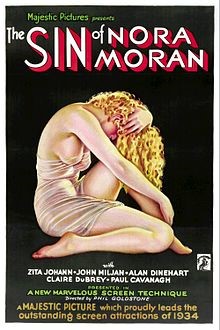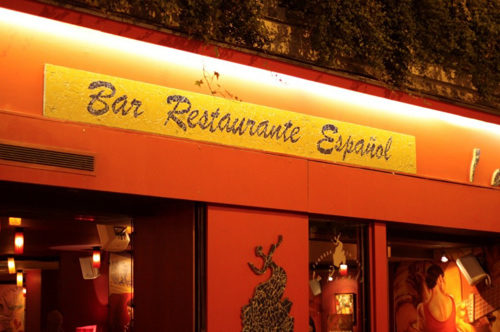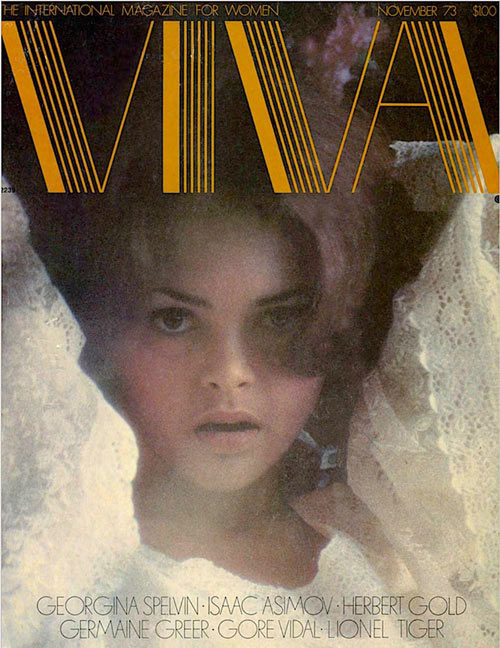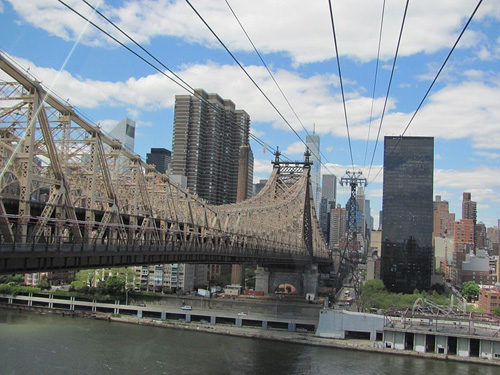North Country Girl: Chapter 59 — Of Magazines and (Naked) Men
For more about Gay Haubner’s life in the North Country, read the other chapters in her serialized memoir.
Some names have been changed.
My artist lover, Michael, and I were broke newcomers to New York City, about to move into an apartment we weren’t sure we could afford. I thought I could go back to waitressing — the most lucrative job I had ever had — but not a single restaurant would hire someone who had no experience in the hectic New York dining scene. Even McDonald’s probably would have shown me the door. My resumes and cover letters to magazines got the same non-response. I had swallowed hard, screwed up my courage, and cold-called a name I had gotten from the editor of Oui, Gerald Sussman. Now I had an appointment with Gordon Lish at Esquire.
As a freelance writer of fripperies and pornography for Oui, a second-tier men’s magazine, I knew as much about magazine publishing as I did about the oil industry. I had no idea that struggling Esquire had just been bought by Clay Felker, who had made a huge success of New York magazine. Everyone in New York but me knew that big changes were coming to Esquire, and it was probably the world’s worst timing to pursue a job there. I also had no idea who Gordon Lish was: the pre-eminent fiction editor of the day, the man who invented Raymond Carver and discovered Richard Ford, Don DeLillo, and Cynthia Ozick.
The Esquire offices in midtown were a dim, dusty, rambling warren. There was none of the bustle and laughter and loud coarse jokes of the Oui offices, just murmurs behind closed doors. The carpet, the walls, and the torn leather chairs in the reception area were uniformly brown. Translucent glass fixtures tried to dispel the gloom, but the only thing that reflected light was the gilt lettering that read “Gordon Lish Fiction Editor” on the glass panel of his door. Mr. Lish ushered me into his small office, which like our sublet apartment, overlooked an airshaft. Crammed on shelves and across his desk and covering the floor were hundreds of books, interspersed with magazines, newspapers, and typed manuscripts held together with brass paper fasteners.
I thought Gordon Lish looked incredibly old; he had pale longish hair and deep parentheses around his mouth and a sweetish scent that reminded me of my grandfather. We shook hands, I shifted a few books off a chair and sat down, and passed him my resume and my writing, née modeling, portfolio.
Mr. Lish turned the crackling acetate pages slowly, looking thoughtful and taking intermittent swigs from a silver flask.
“Ah, the female body has truly unending variations of beauty,” he sighed. He gently touched the tip of his index finger to one photo of an especially pretty girl with especially large breasts. Wait, I thought, he isn’t reading a word of my copy, he’s just looking at the photos!
I suddenly realized that even at Esquire, the birthplace of the Vargas girl, my writing clips featuring nude women playing volleyball, making spaghetti sauce, and riding unicycles were highly inappropriate and, even worse, unlikely to get me a job. But if I threw out all the nudes and made my writing portfolio G-rated, I would be left with five or six paragraph-length captions to funny news photos and a handful of 150-word book and album reviews.

Mr. Lish closed my portfolio with another sigh. “So Gerald Sussman sent you. Pompous twit. I never could stand that man. Would you care for a drink?” Mr. Lish passed me his flask. I took a small sip of what I recognized as Scotch whiskey, trying not to choke on its doused campfire taste.
“Let’s get out of here before I have to hear any more dreadful news. A lunch interview, hmm?”
There was no interview and there was no lunch at the Spanish restaurant Mr. Lish took me to. There was a small half-moon bar, where Mr. Lish and I sat for three hours, and there was a dark, silent bartender in a white jacket who refilled our drinks without asking. There was also a Chivas-fueled monologue from Mr. Lish on the perfidy and consummate evil of Clay Felker, the disgusting decline of magazine and book publishing, the idiocy and ineptitude of all publishers and most executive editors, and the ingratitude of the writers he had made famous, none of whose names I recognized.
By some miracle, the Spanish restaurant Mr. Lish and I got drunk at was on Greenwich Avenue, a few blocks from my miniature apartment. When I realized it would be death if I had another drink, I thanked Mr. Lish, who waved me off, and I staggered home.

The next day at noon, the apartment phone rang.
“Gay, it’s Gordon Lish,” whispered Michael as he handed me the phone.
Oh my gosh, I thought. He’s going to offer me a job!
“I’m at La Casa des Borrachos. Come have a drink with me.” And nitwit that I am, I met him at the bar of that Spanish restaurant. At least this time I covered my glass with my hand when the bartender approached, but I still had to listen to pretty much the exact same litany of injustices Mr. Lish had related the day before. Because I am a slow learner, I met him there a third day, before I finally realized that there was no job for me, and there probably would be no job for Mr. Lish either if he kept spending his days drinking at a bar. On the fourth day I made Michael answer the phone and say that I wasn’t there.
The next phone call for me came from Bernie Exeter, the managing editor of Viva magazine; he had read my resume and asked me to come in for an interview.
I was excited, but not surprised. Mindy, my clairvoyant friend, had predicted my move to New York and reunion with Michael and that I would get a job at Viva magazine. And I knew that I still had my best good fairy gift, my incredible luck. An interview at my favorite magazine seemed like nothing more than my fair due, what the world owed me just for showing up.
Like Mindy I was a big fan of Viva, the sister magazine to Penthouse, created to appeal to an imaginary female counterpart to the male Penthouse reader: a woman who was worldly, curious, sexually liberated, independent, adventurous, fashion crazy, and a drinker and smoker with a sizable disposable income. “The world’s most sophisticated erotic magazine for women” was Viva’s claim, which, when translated meant “We think women like to look at pornography too.”

I had been a faithful reader for years, gazing at clothes I couldn’t afford and admiring makeup I had no idea how to apply. There was lots of erotica; Anaïs Nin and her racy diaries managed to make it into every other issue. I appreciated Viva’s almost realistic attitude to sex, as opposed to the coy tips offered by Cosmopolitan, or the way Glamour and Mademoiselle magazines approached sex, which was hardly at all. But I shuffled through Viva’s pages and pages of steamy photos of amorous couples that were supposed to be titillating with barely a glance. It was hard not to laugh at those buff, handsome men and pretty, large-breasted women in tender embraces, lips pouted, limbs entwined, eyes rolled upward, everything screaming fake, fake, fake. To me the photos were not erotic at all; the only thing that crossed my mind was, “I wonder how much the models were paid?”
The morning of my interview, I pored through that month’s Viva and tried to commit the articles and writers to memory; I was going to wow Bernie Exeter with my knowledge of the magazine. Then I tore through my still packed suitcases for interview attire that said erotic sophisticate. I stupidly chose a Kenzo ensemble purchased back in Chicago from the car trunk clothes dealer: a lavender tunic that tied at the shoulders, worn without a bra but with white harem pants.
Bernie Exeter seemed a bit taken aback at me and my louche outfit when he came to fetch me from the Penthouse lobby, which except for the oversized posters of Penthouse covers, was as grey and anonymous as any insurance or accounting firm.
Bernie Exeter looked like a mustachioed, homelier Chuck Barris. He was wearing a short-sleeved polyester shirt, yellow knit tie, and pleated pants. He led me to his office overlooking the Roosevelt Island tramway, and I handed him my unexpurgated portfolio. I wasn’t worried that I would shock him with my R-rated writing samples; Viva was full of breasts, as well as other body parts. Bernie flipped through the pages for all of ten seconds then slapped the portfolio closed and looked at me. I had no idea what kind of questions he would ask; my last job interview had landed me in the coat check.

“What do you know about the magazine?” he asked, and then, before I had even opened my mouth, he started in on the rise and fall of Viva.
Viva was officially the brainchild of Penthouse owner Bob Guccione and his girlfriend, Kathy Keeton. (Whenever Bob was not around, Kathy insisted that she had thought up the idea for Viva all by herself, which was probably true; Kathy was the fox to Bob’s hedgehog). Bob Guccione was busy lying to, seducing, and taking nude photos of silly young girls and buying Old Masters, Impressionist, and Modern paintings by the crate with the deluge of cash generated by Penthouse magazine. This left Kathy in charge of the new-born Viva, as publisher and executive editor. Under her guidance, and with Bob’s money, Viva enjoyed a few years of success. Write a big enough check and you can get Helmut Newton photographs and Joyce Carol Oates stories to run alongside of shots of bare-chested, smoldering firemen stroking their hoses. A few daring advertisers bought pages and a few desperate starlets posed for the cover, despite Viva’s association with the beyond-the-pale Penthouse. Thousands of young women signed up for subscriptions; a lot more, like me, with my constant lack of a fixed address, bought our copies on the newsstand. Viva’s first print run was a record-breaking 1,002,000 issues.
Kathy Keeton would never have called herself a feminist, but she was a firm believer that women had as much right as men to look at naked photos of the opposite sex. When Bob’s camera started focusing in closer between the spread legs of those silly girls, Kathy set her sights lower too. She decided that the Viva reader was entitled to look at the Full Monty. Kathy was going beyond Viva’s coquettish “love sets” where the male member was always coyly covered by a feather boa or chiffon scarf, beyond the teasing photos, like those of Joe Namath and Burt Reynolds in Cosmopolitan magazine, where the men had one leg demurely cocked forward, as unsexed as a Ken doll.
I was familiar with this part of the story, having bought the issue of Viva that proclaimed “First Penises Ever!” though not for that reason. Maybe Kathy Keeton enjoyed looking at photos of penises. I didn’t especially, and I thought of myself as the epitome of the sophisticated Viva reader. I continued to buy the magazine, flipping quickly past the beefcake with their strangely flaccid penises to get to an article about the world’s sexiest perfumes or a short story by Tom Wolfe.
I was alone in my nonchalance about male nudity. Viva, Bernie Exeter told me, went from overnight success to being on life-support, a pariah among publications. Readers canceled their subscriptions in droves. Newsstands refused to carry Viva, even if the offending magazine was safely swaddled in plain brown paper and hidden away under the counter. Those companies that had been okay advertising in a magazine that ran stories such as “My First Orgy” and “The Good News about Rape” blanched at penises; the only advertisers that had stuck with Viva were cigarettes and a few brave liquor companies, most of whom had gotten their ads highly discounted or free with their purchase of exorbitantly expensive pages in booming Penthouse magazine.
For a few months, Kathy Keeton clung to her X-rated vision of Viva, until the head of advertising sales, Beverly Wardale, a booming Brit in the Margaret Thatcher-She-Who-Must-Be-Obeyed mold, informed her that either the penises went or she did. Kathy Keeton would have brushed off a threat from a lesser mortal, but Beverly was also her best friend. The penises went with zero fanfare, but Viva could not shake its bad reputation.
“’Cause what are you going do?” asked Bernie, “Run a cover line that says, ‘No more penises?’” I shrugged, not knowing the answer; I was busy trying to figure out where this was going and if there was a job for me at the end of it.
“But that’s all changing,” said Bernie, rubbing his hands together. “We’ve got a new editor, she’s a smart cookie, and you’re going to see some feminist articles, and the subscription department’s come up with some neat umbrellas and t-shirts to give away — here, take one.“ Bernie tossed me a tiny white tee with a hot pink “Viva” printed in a hideous fake Art Deco font. Within a year, every other bag lady in New York City would be wearing one of those shirts.
“Well,” said Bernie Exeter, “Do you want the job?”
“I do, I do.…Um, what is the job?”